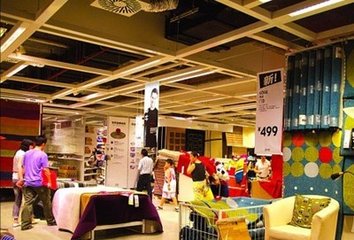The next 12 new terminal models for furniture stores

It's well known that major furniture retailers are spread out across the market, competing for a share of the pie. However, when the growth of market demand lags behind the expansion of these clusters, profits start to thin out, and operational risks rise—something that becomes especially critical during economic downturns. It's not wise for some dealers to raise rents in a weak market, shifting more costs onto themselves. When they feel the "vegetable basket" of their store is getting too heavy, they'll soon look for new ways to survive, seeking out fresh terminal models and building a new "basket."
Looking ahead, the future development model of furniture stores will likely take on 12 new terminal formats:
1. Brand Building: Companies and dealers will work together to create strong brand identities. In the future, commercial real estate will be dominated by "furniture headquarters"—centers that gather top global brands and Chinese manufacturers, with flagship stores, exhibition halls, and experience centers creating a 365-day non-stop furniture showcase.
2. Furniture Supermarket: This model directly challenges traditional rental-based retail. By using warehouses, break-even points, and small-profit, fast-turnover strategies, it empowers consumers with a self-directed shopping experience. There are already successful examples in Beijing and Hangzhou.
3. Online Sales: E-commerce has become a common practice, and with evolving consumer habits, online platforms offer vast opportunities for growth and competition.
4. Experience Hall: Creating immersive home experience centers helps control pricing power, showcases products comprehensively, and raises industry standards.
5. Single Product Pavilion: Focusing on specific product lines allows for more targeted consumer choices. Examples include international pavilions, custom furniture sections, office furniture zones, jewelry displays, and more. This shift from product diversity to structured segmentation represents a new management approach.
6. Dealer Branding: Dealers can build their own brand through quality service and unique customer experiences.
7. Large-Scale Integrated Real Estate Areas: These multi-functional spaces combine decoration renderings and home living areas. Only a few such projects exist in China today.
8. Leasing Model: With the growing trend of commodity leasing in China, the market is expected to reach 1 trillion RMB, with potential profits near 100 billion yuan. For furniture companies, partnering with leasing firms offers a new way to manage inventory and expand sales channels, marking the beginning of the "rental era."
9. Bag Storage: A one-stop solution for design, furniture purchase, and home improvement, making the renovation process easier and more convenient.
10. Custom Furniture: Tailored to fit specific home layouts, offering personalized solutions that meet individual needs.
11. Ant-Moving Type: Designers take orders directly, offering discounts to help homeowners choose furniture that fits their space and budget.
As the market evolves, these new terminal models represent a strategic shift for furniture retailers. They not only address current challenges but also open up exciting possibilities for the future of the industry.
Brown Clip Hair,Natural Black Hair,Blonde Hair Extensions,Wire Hair Extensions
Xuchang KANAZI Hair Products Co., Ltd. , https://www.kanazihair.com